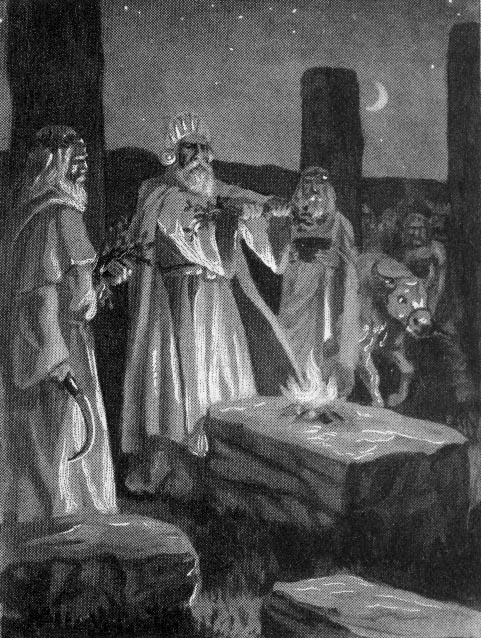 In my last article on the Bedouins, I had detailed the Bedais of Ptolemy, King Baldwin, and a Knights Templar connection with the mysterious roaming desert Arab tribe known as the Bedouins (Baudouin, Beduin, Bedawin, bed’oo-in, written also Bed- awee, Bedawi, and Ahl Bedoo). From this research I have done, it appears that there was definitely some type of alliance between the Bedouins, the Templars, and the Holy Roman Empire. Whether or not these connections still remain, I AM not certain.
In my last article on the Bedouins, I had detailed the Bedais of Ptolemy, King Baldwin, and a Knights Templar connection with the mysterious roaming desert Arab tribe known as the Bedouins (Baudouin, Beduin, Bedawin, bed’oo-in, written also Bed- awee, Bedawi, and Ahl Bedoo). From this research I have done, it appears that there was definitely some type of alliance between the Bedouins, the Templars, and the Holy Roman Empire. Whether or not these connections still remain, I AM not certain.
In this article I would like to explore more into this Bedouin connection to the Western world, by listing the peculiar similarities that I have found that they share with such people as the ancient Celtic Druids. Like the Bedouins, the origins of the Druids and their true history has been lost or purposely hidden in the shadows, but I believe they are somehow connected with one another through various alliances made throughout history.
It is alleged that the original Druids are no longer in existence. Much of the history or knowledge that has been passed down, has come from second-hand sources or pro Roman authors like Julius Caesar. There have been many books and articles written about the Druids; I believe we should use these sources to research their history, and we should also use other books about other cultures or tribes and science, which can now help us make connections and new revelations that have never before been made in history.
I know that it seems improbable to some of you that an Arab Tribe that is still active today from the Middle East and North 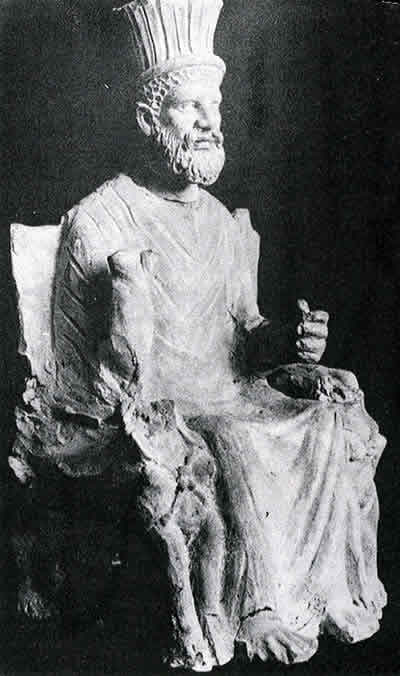 Africa, would be related to the Celtic Druids who resided thousands of miles away in Ireland, Scotland, Brittain and France in the 1st-8th centuries. However, based on my findings, they do appear to be related to one another, and they actually share some of the exact same religious customs, Gods, tribal laws, and even their clothing and attire is very similar.
Africa, would be related to the Celtic Druids who resided thousands of miles away in Ireland, Scotland, Brittain and France in the 1st-8th centuries. However, based on my findings, they do appear to be related to one another, and they actually share some of the exact same religious customs, Gods, tribal laws, and even their clothing and attire is very similar.
A common bond, that I believe connects the Druids and the Bedouins together, because there are simply too many of these connection to call it coincidence.
Abraham & Joseph the Bedouin Princes with the God Baal
One connection is in the bible, where we see Abraham the Bedouin prince who was in the Bedouin court in Egypt, and also Joseph the Bedouin slave who became again the Bedouin Prince in the land of Canaan. Canaan was where the God Baal was worshiped, and it is also commonly known that the Druids had also worshiped a God named Bel (Baal). Baal has the exact same meaning in Gaelic as it does in Phoenician , “the lord of heaven.”
Baal worship is nothing more than alchemical fire worship within our DNA; the lord of heaven represented by the eternal flame. If we simply follow the flame “the light”, we will be able to make connections where no one else has made them before, and it helps if the person attempting to make these revelations has this light within them.
Both the Druids and Bedouins Were Poets and Bards
The Druids divided their tribe into three classes, which were the Bards, Ovates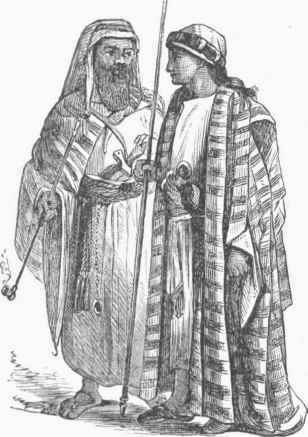 and Druids. The Bedouins also have Bards, and if you research further into history you will find the only people who were named like this, were the Syrian and Phoenician Bards.
and Druids. The Bedouins also have Bards, and if you research further into history you will find the only people who were named like this, were the Syrian and Phoenician Bards.
The Druids were well-known as great poets and singers; who it was said through Julius Caesar, that they had memorized over 20,000 verses by the age 20 years old. These secret poems had contained their secret mysteries of their faith encoded in poetic form, which they are said to have never written down. You will also find that the Bedouins are poet’s that are very well-known in the Arab world (1), but not so much here in the Western world like the Druid poets.
The Phoenician connection to the Druids has been made many times before, and my research also leads to the Phoenicians being the same as the Druids. I believe that it was the Druids who came to Ireland, Britain and France and replaced the Phoenician bards or in name only. In addition, the Bedouins may also be of Phoenician origin, which makes perfect sense because I believe they are both of Phoenician creation with their same customs and the usage of the name “Bards.”
Here is some quoted research from other authors on the Bedouin and Druid Bard/Poetry connection;
“The Bedouins are poets and fictionists, and a thousand and one Arabian Nights‘ Tales are still current among them. Each tribe has its bard, who celebrates the deeds of its robber chief and great leaders, and every Bedouin is an aspirant for the position.(1) Already, a considerable time before the birth of Muhammad and the promulgation of Islam, many Arab tribes possessed distinguished bards, whose poems were recited in social assemblies and fairs, the most remarkable of these compositions, dealing with war and love, being handed down to posterity by oral tradition from generation to generation.(2)
It is noted that in Ireland, by the 5th century that the Bards had separated from the other Druids who had also divided into numerous classes of their own. The separation is marked, in our Tragedy, by the appearance of the Bards in their distinct character at the festival of Leogaire. (3)
“The Celtic priests, or Druids,” says he, “who, like the Egyptian priests, had adopted the Chien-Levrier for a symbol, called themselves the ministers of an Unknown God, descended, it is said, upon earth, as Thoth, under a human form, and having all the characteristics of that Egyptian god, with the head of a dog; benefactor of Humanity, Supreme—civilizing Legislator, Poet and Musician, King of Bards, Inventor and Protector of Agriculture, Regulator of Waters, Protector in Darkness, raised to the Presidency in a circle of stones, Founder of sacred ceremony, Model-priest, invoked under the name of Father.”(4)
The Druid and Bedouin Connection With the Oak Tree: 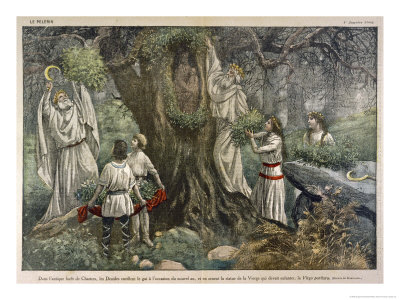
To the Druids, the sacred Oak Tree was held in veneration as the world pillar that represented the center of the universe, and where most everything that they did was performed under this mighty tree. This included animal and human sacrifices. These oak trees were also known as “Justice Trees” where criminals were tried under, with the judge and the jury being seated under its shade, and the culprit placed in a circle made by the chief Druid’s wand.(5)
Let me point out to you that the Bedouins also have special oak trees where they perform what are called “Sulkhas”, which was the method they had used in settling major differences amongst families. Both Berbers and Bedouins follow this Islamic practice of a ritual ceremony of forgiveness.
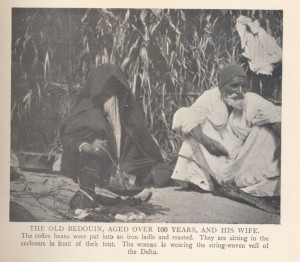 The Bedouins do not have laws, so this was most common when serious family quarrels had occurred or a murder amongst tribe members. This can be witnessed even today near the village of Arab a’ Shibli, where there is an actual oak tree named “Sajarat el Bahta” in which these Sulkhas were carried out, and may still be to this day. This judging of criminals and ceremonies under trees are known from Biblical times (Judges 3:5), but specifically connects the Bedouins and Druids who only had judged criminals under the oak tree. The Bedouins are the only known Arab tribe to have a “Justice Tree” that is an oak tree exactly like the Druids had, which makes this more than a simple connection, but a tribe relation based on lawful customs handed down from the generations.(6)
The Bedouins do not have laws, so this was most common when serious family quarrels had occurred or a murder amongst tribe members. This can be witnessed even today near the village of Arab a’ Shibli, where there is an actual oak tree named “Sajarat el Bahta” in which these Sulkhas were carried out, and may still be to this day. This judging of criminals and ceremonies under trees are known from Biblical times (Judges 3:5), but specifically connects the Bedouins and Druids who only had judged criminals under the oak tree. The Bedouins are the only known Arab tribe to have a “Justice Tree” that is an oak tree exactly like the Druids had, which makes this more than a simple connection, but a tribe relation based on lawful customs handed down from the generations.(6)
The next connection is Animal Sacrifices used in ceremonies or tribal customs.
It is a fact that the Druids used to sacrifice sheep, oxen, deer and goats, whose charred remains have been discovered at Avebury, Stonehenge and also in the vicinity of St.Paul’s Cathedral. In the many Druid temples that have been excavated over the years, thousands of bones of both sheep and oxen have been found. The Bedouins also sacrifice animals on the tops of mountains, and to this day sacrifice lambs within stone circles. With the Bedouins on the peninsula of Sinai, there was a custom of sacrificing in vogue, which we have to view as the oldest form of animal sacrifices.(7) This was witnessed at an alleged cult site at Tel Haror in the Levant, where a researcher had observed numerous foot bones of sheep, goats and cattle near ancient sanctuaries that were from the Middle Bronze Age (1800-1550 B.C.). Bedouin communities sacrifice sheep, goats, cattle and an occasional camel to a “weli” or a revered person at their sepulchers.(8)
This hilltop sacrifice may be related to the Druids who also had festivals on top mountains. Here is a quote that goes into detail about this;
the very numerous names of places in Ireland, Scotland, and Wales, of which carn forms a component part, are evidence of the universal adoption of fire-worship in these countries. “I remember,” says Toland, ” one of those Carns on Fawn-hill, within some miles of Londonderry, known by no other name but that of Bealtine, facing another such Carn on the top of Inch-hill.”* He then alludes to an instance, noticed by Gregory of Tours,f of a ” hill of the same name, between Artom and Riom, in Auvergne, in France.” Even the well-known mountain called Bessy Bell, in the county of Tyrone, maybe reckoned an example of the same kind. For, in the Statistical Account of Ardstraw, in that county, we are told that ” there is a tradition, which derives the name of this mountain from an idol, Bell, whose religious rites were performed on its summit in the times of paganism, and were called Baase; hence, Baase Bell meant the ceremonies of Bell, since corrupted into its present name.”(9)
Ancient Fire Worship and the God Baal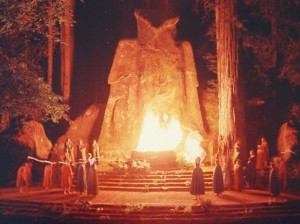
It is said that the Druids believed in one God, Bel; that was the name given to the Supreme, the meaning of which is “He that is.” This you will find is very similar to Biblical times, where the God Baal was worshiped. The meaning of Baal in Gaelic as in Phoenician is the lord of heaven or the Sun. The Druids as well as Phoenicians identified this, their supreme deity with the Sun. In Kirby Thore, Westmorland in Ireland there was a Druid altar stone that was dug up with this inscription:”DEO BEL ATUCADRO IB[ERUM] VOTUM FECIT IOLUS”, which translates: “To the god Baal, the friend of man, Iolus made his free vow.”
In the Bible, In 1 Kings 8:18-40; the Prophet Elijah had challenged the Hebrew priests of Baal, and is one of the main Bible stories that defines what happened with these priests. It is clear that scripture tell us, that back then the majority of Hebrew priests and people worshiped Baal, or quite simply, the fire within, or what some say “the sun”. I have found evidence, that in ancient times the Bedouins had also worshiped fire, and that some of the Bedouins still reside in this same area that is described in the Old Testament in or near Egypt.
Here is some research found of this ancient fire worship discovered where Bedouins have settled.
Mohammedanism, or Islamism, is the prevalent religion of Arabia, though, among the inhabitants of the Wadi Doan, a large and populous valley in the interior of Hadramaut, Baron von Wrede found traces of the ancient fire-worship; and M. Arnaud, in 1843, found among the mountains of Yemen many Arabs whose reverence for Hud, a prophet who preceded Mohammed, and who cursed him and his followers, was stronger than that for the prophet of the Koran.(10)
The best character of the Bedouin, says Burton (Pilgrimage, p. 44), is a gentleness and generosity. The Semite, says Layard, shows a ready eloquence; his words are glowing and apposite; his descriptions true, yet brilliant; his similes just, yet most fanciful. These high qualities seem to be innate in him. The three great monotheistic systems which have divided the civilised world, came faith from nations of Semite origin, among whom arose the priests or prophets of all those nations who hold the unity of God. In the south and east of Asia are representatives of those three great religions, Jew, Christians, and Muhammadans, as also a race, the Parsee, following the fire-worship, which seems to have been a corruption of the doctrines taught by Zoroaster.(11)
As you can see above, the Bedouins appear to not be united by one religion, but quite possibly multiple religions and maybe races. This more modern author below claims that there appeared to be a different race of Bedouins, that were different from other Bedouins with having a fair complexion . Meaning they were whiter than their other Bedouin cousins, which may tie them to the Phoenicians and the Druids. Some of these Bedouins appear to deny the prophet, but trust in certain intermediate beings, who are called the confidants of God.
They are, he says, a fair-complexioned people, who appear different in race as well as habits from other Bedouins, with an extraordinary and mysterious knowledge of the healing art, of which they are established practitioners among the Arabs :—
‘Suffice it to say that paracentesis, lithotomy, and still more difficult operations, worthy of an Astley Cooper or a Brodie, have often in my hearing been ascribed to the Solibah surgeons, and that with such circumstantial detail in the narrative as to give it at least an air of truth.’
Now Lieutenant-Colonel Pelly, British Political Resident in the Persian Gulf, who has lately visited the Wahabee capital, and whose sources of knowledge are altogether independent, contributes the following notice of this singular people, ‘ from ‘information collected among themselves :’—
‘The word Selaib signifies a cross. . . . The Selaib who have emigrated into Najd and other Mohammedan settlements conform outwardly to the religious rites and ceremonies of the dominant creed. But in their own tents, or when alone, they do not so conform. . . . They profess to reverence Mecca, but state that their own proper place of pilgrimage is Haran in Irak, or Mesopotamia. . . . They respect the polar star, which they call Jah, as the one immoveable point which directs all travellers by sea and land. They reverence also a star in the constellation called Jeddy, corresponding with Aries. In adoring either of these heavenly bodies the Selaib stands with his face towards it, and stretches out his arms so as to represent a cross with his own body. They believe in one God. Some of them pretend to believe in Mohammed. Others deny the prophet, but trust in certain intermediate beings, who are called the confidants of God.'(12)
Druids and Bedouins Dress Very Similar
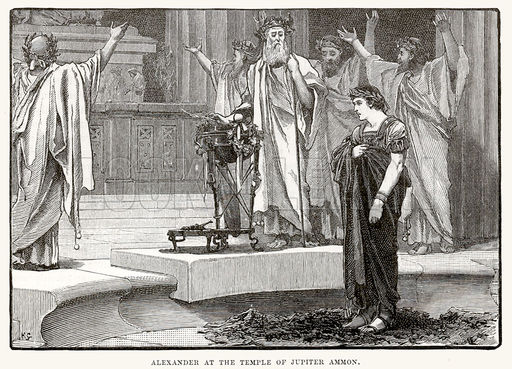 You will also find that the Bedouins and Druids also dress very similar to one another. They both wear white long robes. However in more modern times, you also see the Bedouins wear black. In addition, sometimes you will find plaid (a pleated cloth worn with the modern kilt, made from the same tartan and worn cast over the shoulder) being worn as a scarf by the Druids in Ireland and Scotland. This exact same plaid is worn by the Bedouins, and let us please not forget the biblical Bedouin Joseph and his coat of many colors, and also the Scottish Highlanders and their plaid kilts that can still be found in Scotland to this very day.
You will also find that the Bedouins and Druids also dress very similar to one another. They both wear white long robes. However in more modern times, you also see the Bedouins wear black. In addition, sometimes you will find plaid (a pleated cloth worn with the modern kilt, made from the same tartan and worn cast over the shoulder) being worn as a scarf by the Druids in Ireland and Scotland. This exact same plaid is worn by the Bedouins, and let us please not forget the biblical Bedouin Joseph and his coat of many colors, and also the Scottish Highlanders and their plaid kilts that can still be found in Scotland to this very day.
The druids also wore Oak leaf chaplets on their heads during ceremonies. These are the same oak leaf chaplets that you will find on the Priests of Jupiter Amon in the time of Alexander the Great at El Beda (Bedais of Ptolemy) in the Siwa Oasis. This is where Alexander the Great had visited this temple and was initiated into the secret mysteries, and where he was also declared by the priests there as the son of God or Jupiter Amon.
The Druids were originally Phoenicians & The Bedouin Scotland Connection
A peculiar thing that I found in my research for this article that does not relate directly to the Druids, but connects the Bedouins to Scotland, which I feel would make sense if they could also be Druids. They may have very well been known originally as the Phoenicians, who the Irish believe had colonized this area in the pre-Christ era. I will just quote this author because I could find no other research to confidently speak it on my own;
“In many particulars there is a singular resemblance between the character and manners of the Bedouins, and those of the Scottish Highlanders, at the period when the feudal authority of their chieftains existed in full vigour; and the clans chiefly occupied themselves in a predatory warfare upon one another, or upon the more peaceful inhabitants of the low country. We happen to have access to some interesting reports respecting the state of the Highlands, made in the years 1724, I725, and 1727, by the celebrated General Wade, which we believe have never yet been published, although they contain much curious observation It will, doubtless, gratify our readers to be furnished with an extract from these reports, by which they may estimate the justness of the parallel which we have drawn between the character of the wild Highlander and that of the wild Arab.
The political constitution of these Bedouin tribes strongly resemble that of our own clans in Scotland; each is divided into several septs, governed by subordinate sheikhs or chieftains, under whom the clansmen rally without prejudice to the patriarchal supremacy of the high chief of the whole race, to whom the chieftains who the same deference that the clansmen in general pay themselves. My heart warms to these Bedouin Highlanders, and the Tora tribes arc a peculiarly fine race ; the whole party, indeed, were good humoured, hearty fellows.'(13)
SOURCES:
- Oral Poetry and Narratives from Central Arabia: Bedouin poets of the Dawāsir …By P. M. Kurpershoek
- Chambers’s Edinburgh journal, Volumes 1-2 By William Chambers, Robert Chambers
- The Calcutta review, Volume 69
- Irish Druids and Old Irish Religions By James Bonwick
- The druid;: a tragedy, in five acts. With notes on the antiquities and early .. By Thomas Cromwell
- Website link Rituals, ceremonies and customs related to sacred trees with a special reference to the Middle East
- Bibliotheca sacra, Volume 65
- http://www.sbwire.com/press-releases/bedouin-animal-sacrifice-rituals-provide-clues-to-archaeological-remains-133733.htm
- The Select circulating library, Volume 13, Part 1 By Adam Waldie
- The New American encyclopaedia: a popular dictionary of general …, Volume 1
- Panorama of nations: or, Journeys among the families of men: a description …By Harry Gardner Cutler, Levi W. Yaggy
- The Edinburgh review, or critical journal, Volume 122
- The Encyclopædia of India and of eastern and southern Asia: commercial …By Edward Balfour
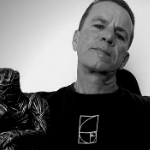
Moe is the founder of GnosticWarrior.com. He is a father, husband, author, martial arts black belt, and an expert in Gnosticism, the occult, and esotericism.

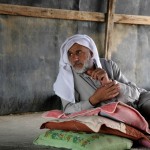
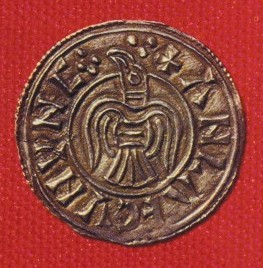
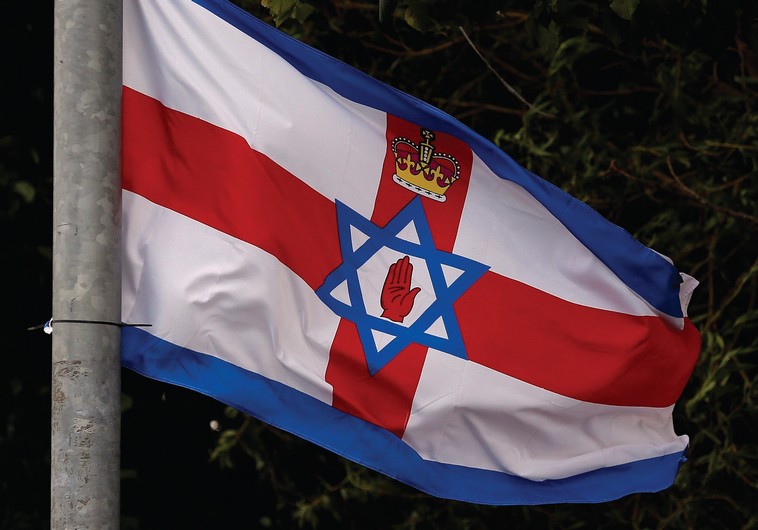
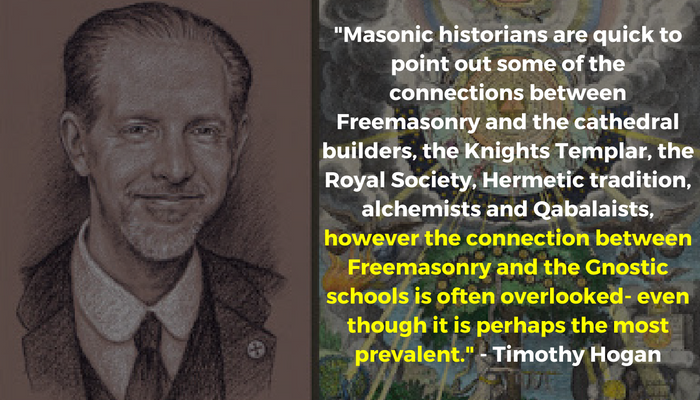
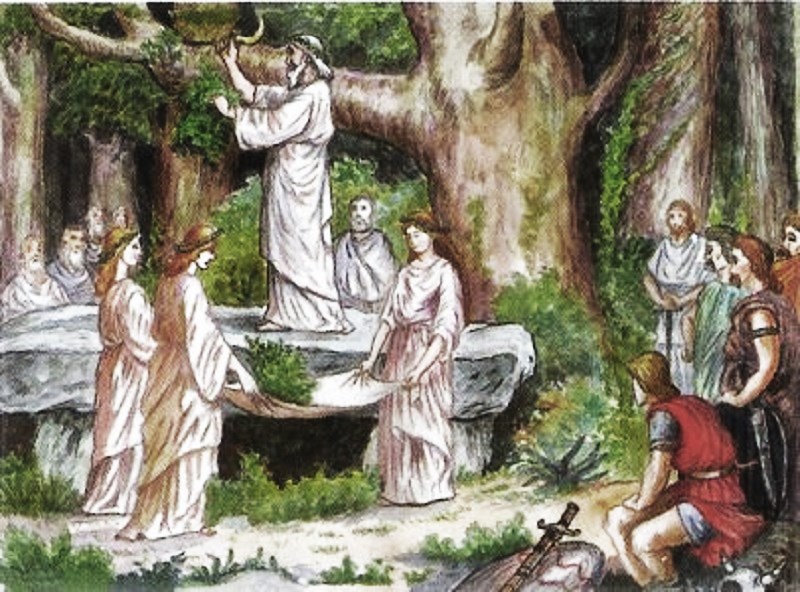
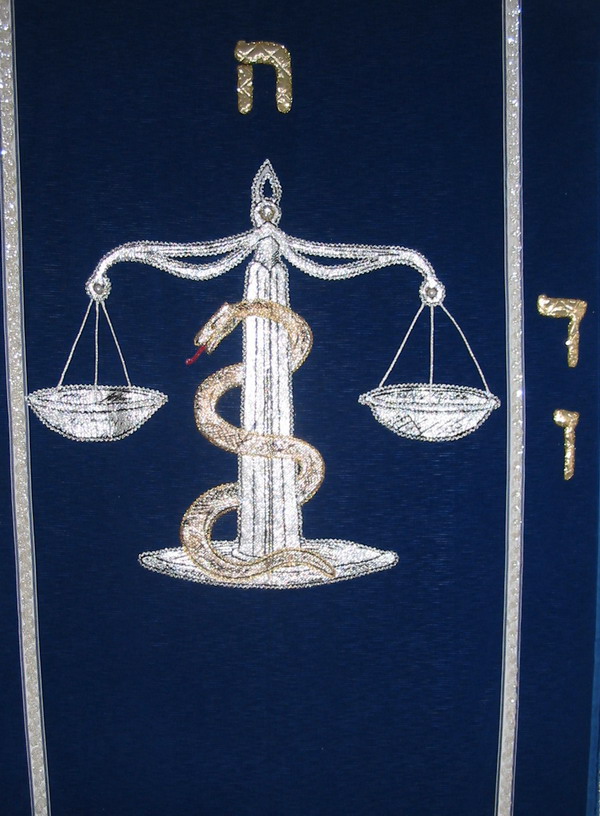

A very nice article, thank you for posting it. I found it in my own quest to understand the relationship between the Celts and the Carthaginians. I especially appreciated your section about the similar dress. There are some petroglyphs in California that would probably help prove your theory, but they would also set the stage for a whole lot more questions.
Egyptian god, Thoth, had the head of an IBIS. Anubus had the head of a dog. The 1st monotheist was the Egyptian pharoah, Akhenaten IV.
#1. The Romans lacked the letter “U” in their (Latin) alphabet.
#2. Thus the Romans would write the (Tree Worshiping) DrUid as a DrVid.
#3. DRVO or DReVO in ALL Slavic languages means WOOD or TREE
#4. DRVIDs or DRVIDi are therefor the “WOODIES” in ALL Slavic languages.
#5. It is incomprehensible to me that no Wood-Henge or Stone Henge expert ever picked up on this!
Sincerely Petr Jandáček
127 La Senda Rd.
LOS ALAMOS NM USA 87544
http://www.jandacek.com
[email protected]
I never knew that Jack. Thanks so much for this information and it will help me tremendously in my research. Do you have any literature with the word DrVid or supporting research?
Thanks so much for the kind comment Lovell. Please make sure to check out my other article on the Bedouins and Templar connection @ https://www.gnosticwarrior.com/the-bedouins.html
I like this, good research Brother Moe.